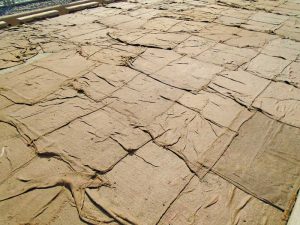Concrete tips: why effective curing practices are important

In contrast, the second description of curing can be interpreted as the long-term development of concrete, often expressed as “concrete never stops curing,” and nowhere in this description is there a call to proactive action.
Based on the evolution of the literature, the first definition above aligns best with the perspective of the concrete industry, which is, curing is something to be specified and done.
Specifying proper curing
When done right, curing reduces cracking, improves durability, and increases strength. Conversely, when concrete is improperly cured, it can lead to inadequate strength gain, surface dusting, surface crazing, plastic shrinkage cracks, excessive slab curl, reduced resistance to freeze-thaw, scaling, etc.
Curing requires two conditions: suitable moisture and temperature. Water is a chemical necessity for hydration and pozzolanic reactions to occur, and these reactions turn wet cementitious material and aggregate mix into a hardened mass. As soon as the wet concrete leaves the mixer, ambient conditions immediately begin to reduce the water available for hydration through evaporation. Elevated ambient air temperature, low ambient relative humidity, high concrete mix temperature (from heat of hydration, hot aggregate which has been in the sun, and high temperature for extended periods), wind, and any combination of these, rapidly remove necessary water from the mix. The need to protect freshly placed concrete from excess evaporation is not solely related to warm weather conditions as it can potentially occur at any ambient temperature.
Recall the second necessity for proper curing is suitable temperature. Curing is not just about keeping sufficient moisture in the freshly placed concrete; it is also about maintaining suitable temperature in and for it. Ambient temperature, mix temperature, and the temperature of the base on which the concrete will be placed on needs to be discussed, monitored, planned for, and addressed.
It may seem daunting to consider all the variables, but there are many resources to aid in properly specifying “curing” in project documents. Some ACI standards to follow are:
- ACI 308, Specification for Curing Concrete
- ACI 305, Specification for Hot Weather Concreting
- ACI 306R, Specification for Cold Weather Concreting
- ACI 301, Specifications for Structural Concrete



